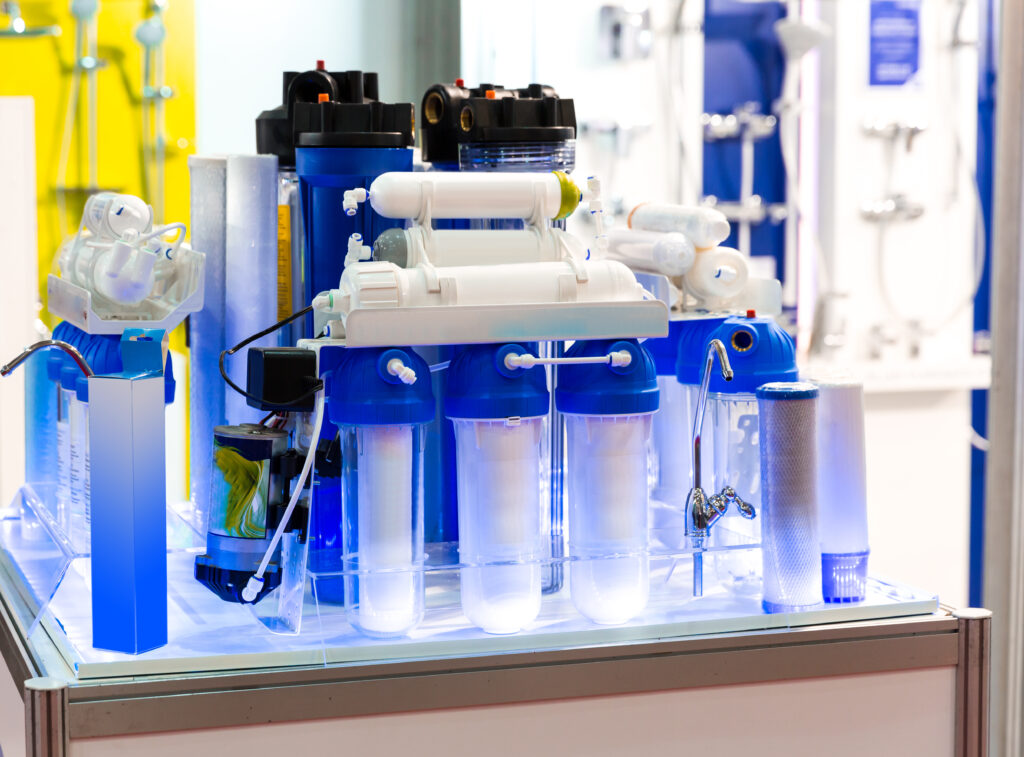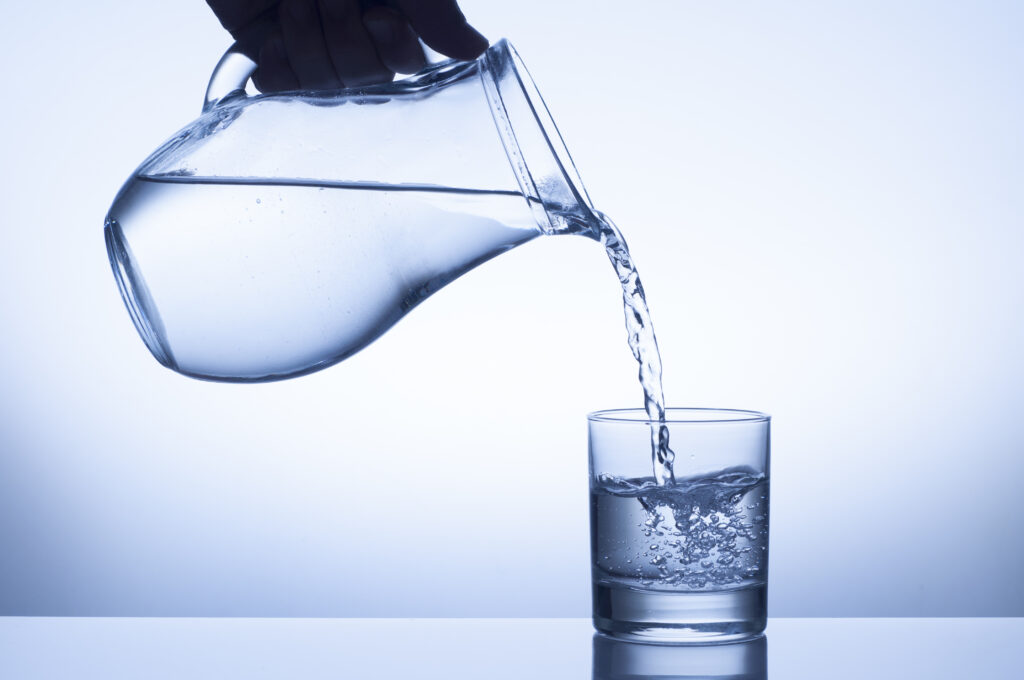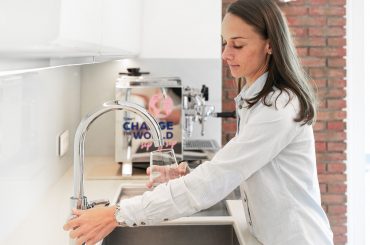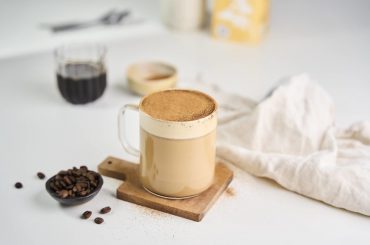Depending on how the properties of water at your premises differ from the ‘ideal’ ones, you will need to use more and more effective water filtration methods. Below, we describe them from the simplest to the most complex ones, which also have the most to offer.
As a short introduction, we want to stress that for the sake of comfort and efficiency, the majority of water filters currently on sale are a combination of several of the systems described below. Almost every ion-exchange filter has a microfiltration system and an activated carbon filter whose task is to preliminarily purify water.
1. Microfiltration
It is a kind of a very thick, multi-layer 1µ (micron) sieve whose task is to capture all steady contaminants which can be found in the water supply system. This filter type doesn’t change the mineral content, doesn’t influence pH, etc. Its only task is to remove physical contaminants from the water. It should never be used as the only means of filtration; it is part of many more complex systems.

2. Activated carbon filter
Because of their large surface, activated carbon filters are very effective and efficient in eliminating water discolouration and odours, as well as chlorine. They don’t change the mineral composition, hardness or the pH of water. Combined with microfiltration, they can be a sufficient filtration system wherever tap water has optimal properties to be used for coffee and with coffee equipment. In such rare situation, this simple system can keep water free from undesirable odours or solids.
A sample filter: BWT Besttaste
Application: soft water with the properties within the SCA range.
3. Water softener
Such filters are made of a resin exchanger regenerated by salt tablets (ion exchanger) that the water from the supply system passes through. Their task is to decrease the total hardness of water by removing the calcium Ca2+ and magnesium Mg2+ cations and replacing them with the sodium Na2+ or potassium K+ cations. As a result, limescale doesn’t build up, but at the same time the minerals essential for the taste of coffee get lost; they are usually replaced by sodium which has a negative impact on coffee extraction. KH and pH levels also don’t change, so the buffer can additionally decrease the brew quality, and the TDS level can grow. To sum up, the only benefit is the lack of limescale; and yet, it comes at the expense of coffee taste. Such choice is right when it comes to dishwashers or ovens, but it should be avoided when it comes to coffee. However, you should bear in mind that an ion exchanger itself is not a bad thing with regard to coffee. But remember not to use a softener running on salt tablets; instead use a filter cartridge that has several filtration systems and where an ion exchanger is just one means of filtration that captures e.g., only calcium ions Ca2+ and replaces them with desirable magnesium ions Mg2+. An example of such filter is the BWT Bestmax Premium.
A sample filter: a softener using salt tablets
Application: limescale prevention suitable for dishwashers/ovens – not for coffee

4. Limescale inhibitor
The name may be intimidating, but the way the filter works is, on the other hand, very simple. It doesn’t change the water properties in any way – the GH, KH, TDS and pH values stay exactly the same. So how does it help you avoid limescale? The polyphosphates found in the filter cartridge react with the calcium minerals, thus helping to avoid or diminish (depending on the grade of water hardness) the reaction leading to the limescale build-up. It is a good solution in a situation where the total hardness level doesn’t exceed 130 ppm and the total value of TDS is lower than 150 ppm.
A sample filter: the BTW Bestprotect (it uses other technologies too)
Application: water with a low TDS <150 ppm, total hardness <130 ppm
5. Alkaline ionizer/decarboniser
This filter type uses an ion exchanger and removes most Ca2+, Mg2+ and HCO3– ions from the water, releasing hydrogen. This brings the water pH value down to under 6, which leads to corrosion. The level of TDS goes down too. To stabilise pH and reduce the risk of corrosion, it is essential to install a bypass that would help to mix filtered water with unfiltered or softened water. This will allow you to find an optimal level of the above mentioned parameters. This technology can be used for water with high carbonate hardness (>180 ppm). Its side effect (apart from a lower pH) will be high CO2 emission, which can be seen on the surface of the espresso crema. Modern filters based on this technology are also able to remove limescale, which is why the above mentioned side effects are minimised and in the end you get water optimal for coffee. Currently, it is one of the water filtration systems most often used for coffee.
A sample filter: BWT Bestmax (it uses other technologies too)
Application: water with high general and carbonate hardness
Source: Specialty Coffee Association
The above-mentioned methods of filtration based on the ion exchanger can often be integrated into one filter cartridge to achieve optimal water parameters for given application. Such filter is, for example, the BTW Bestmax Premium that not only lowers water hardness, but also enriches it with magnesium ions Mg2, which let you bring out more sweetness and a fuller flavour. A comparison of different filtration systems below:
Source: Specialty Coffee Association
6. Reverse osmosis (RO)
It is a Holy Grail in the world of high-quality coffee. A system that helps to ‘reset’ water, removing from it almost all components so that its TDS = around 10 ppm. Such almost entirely demineralised water requires a new mineralisation for coffee to taste adequately. The missing minerals can be regained in 2 ways:
- Through a mineral exchanger
- By mixing the water with water filtered another way (bypass)
Each of these ways has its pros and cons. A mineral exchanger has the chosen components, but they get washed out with every litre and you cannot control the TDS of water in the long term. On the other hand, a bypass lets you mix the RO water and the water from an activated carbon filter whose mineral composition corresponds to that of tap water. This way we don’t control the ratio of minerals, but we can freely lower their total concentration, which is sometimes the only solution in a situation where TDS is over 400 ppm and general hardness is over 250 ppm. A drawback of the RO technology is a high cost of purchase and high water consumption which can be minimised using the ‘discharge’ water for flushing the toilet. Moreover, modern systems are highly efficient, keeping water losses minimal.

For the greatest geeks, there exists an ideal solution: reverse osmosis with customised mineral levels, where an electronically customised mixture of minerals of your own choice is added to the clean RO water. Calcium, magnesium and buffer ratios depend solely on our fantasy, and an electronic controller is in charge of monitoring their levels. Such solutions are offered by the Polish company AKVO, whose systems are created specially for coffee.
7. Other filtration methods
Apart from the above mentioned methods for changing water parameters, there exist other, at present less popular methods. For example, a dealkaliser that lowers the level of HCO3 anions, viz. buffer. It doesn’t affect general hardness, but it decreases carbonate hardness. It uses an ions exchanger or a strong acid, such as H2SO4. It raises the acidity of water and is conducive to corrosion, so it is unlikely to be found at a coffee shop.
8. Remineralisation
What if tap water has almost no minerals, is very soft, has very little buffer and a TDS of around, for example, 20 ppm? Then you need to follow a reverse procedure, i.e. remineralise water so that it reaches an adequate level. To do so, use mineral cartridges with a suitable mineral composition that will increase water hardness and the buffer level. When using mineralisers, you should closely monitor the initial water parameters, because remineralisation is less effective with every litre of water, which flows through it, which is why it is difficult to keep steady water parameters.
A sample filter: The BWT Bestmin
Application: water with a low TDS <40 ppm, low total hardness <20 ppm
Replacement and maintenance
Each filter type wears out over time. Its wear depends on the water hardness. The harder the water, the quicker you should replace the filter. You can get accurate information about a given filter’s performance from its manufacturer. You should also remember to change filters no less than every 12 months even if they still haven’t worn out completely. Since otherwise you risk that bacteria and microbes will grow on your exchanger over time. To make your life easier and ensure changing filters timely, it is worthwhile to install a flow meter set at an appropriate value. It will count the litres that are left until the cartridge needs to be replaced. To respect 12-month periods, all you need to do is write the installation date on the cartridge.
| Filter type | Residues /discolouration /smells | TDS | Buffer (HCO3–) | pH | Limescale formation potential |
| Activated carbon | Decreased | No changes | No changes | No changes | No changes |
| Ion exchanger (sodium) | No changes | Increased | No changes | No changes or increased | Decreased |
| Limescale inhibitor | No changes | No changes | No changes | No changes | Decreased |
| Decarboniser | No changes | Decreased | Decreased | Decreased | Decreased |
| Reverse osmosis (RO) with a bypass | Decreased | Decreased | Decreased based on TDS adjustments | No changes | Decreased |
As you can see, the question of water quality and its optimal parameters is quite complex. And yet, you shouldn’t cut corners and use any filtration system. It is worthwhile to rely on water analyses, to take your time to understand its composition and then choose an appropriate device that will ensure an optimal coffee or tea flavour and a problem-free use of equipment. As in every case, you can also get advice from the experts who dispose of the necessary equipment, knowledge and experiences that will let them infallibly choose the most appropriate filtration system.
You can read more about the properties of water that is the most suitable for coffee in this article:
https://b2b.coffeedesk.pl/blog/en/2019/12/23/water-the-main-ingredient-of-coffee-part-1/





